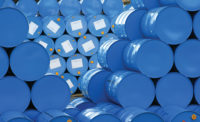This article provides a general outline for choosing and implementing signage and lighting. These include: the layout of the building or area which requires signs, the material of the signs, the intensity of the lighting, and the specific needs of a given workforce.
Selecting signage
With simple visual and textual cues, signs communicate critical messages and facilitate clear thinking in emergency situations. Repeat viewings of safety signs also foster familiarity with important procedures and precautions, helping employees internalize a safety-conscious mindset.
The size and shape of a given workplace must be taken into account when choosing signage. A larger or more compartmentalized space will require more signs. OSHA provides detailed requirements for signage and it is imperative that you are familiar with the relevant standards. At the same time, an appeal to common sense helps create a safe and communicative workplace. Are all hazards and potentially dangerous materials clearly marked? Are clear instructions for emergency operations and exit strategies easily visible throughout the workplace?
The material of a sign helps determine its efficacy. Aluminum signs excel in outdoor applications. Aluminum is lightweight, strong and does not rust. If the signs are for nighttime or traffic use, reflective sheeting may also be necessary. Aluminum signs can generally be expected to last 5 to 10 years.
Plastic signs perform well in indoor and select outdoor applications. Polyethylene and polypropylene are two commonly used plastics for signage -- they are weather-resistant, chemical-resistant, and will not crack or peel. Plastic signs can be expected to maintain peak performance for 5 to 10 years.
Pressure-sensitive adhesive signs communicate safety messages effectively while saving space and costs. Adhesive signs can be applied directly to walls, doors, and windows. An adhesive sign can be expected to perform well for 2 to 5 years.
Selecting lighting
The lighting you choose has a direct effect on the visibility, safety, and even emotional state of a given workplace. First take into account the strength of illumination a given lighting system provides. Most general construction areas, warehouses, hallways, and maintenance areas require at least 5 foot-candles of illumination intensity. Some critical areas, such as first aid stations and infirmaries, require 30 foot-candles of illumination intensity. The precise requirements for a given workplace are listed in OSHA standard 1926.56.
Egress path marking systems supplement existing emergency lighting systems. Photoluminescent (that is, glow-in-the-dark) materials are commonly used to illuminate exit paths. Since photoluminescent materials absorb light from their surroundings, make sure that a sufficiently powerful illumination source exists to provide the necessary visibility during an emergency.
Workplace lighting also has a strong effect on workers and employees. Psychological factors should not be overlooked: after all, lighting is provided for people, and people respond to external stimuli, including lighting. Bright lighting can improve focus and attentiveness, not only increasing productivity, but general safety. Better awareness can prevent accidents and mistakes, and a generally well-lit workplace, in addition to meeting all safety requirements, should be a strong priority.



